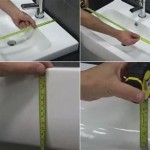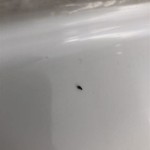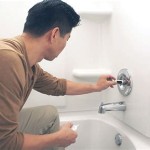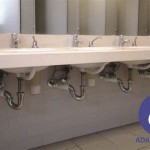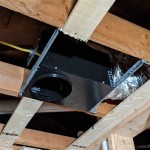Leak Under My Bathroom Sink
A leak under the bathroom sink can range from a minor annoyance to a significant plumbing problem. Addressing the issue promptly is crucial to prevent further damage, such as mold growth, wood rot, and potential flooding. This article provides a comprehensive guide to identifying, troubleshooting, and potentially resolving common causes of leaks under the bathroom sink.
Identifying the Source of the Leak
The first step in resolving a leak is pinpointing its origin. This involves a systematic examination of all the plumbing components under the sink. Start by thoroughly drying the area with towels to better observe the leak's location as water flows. Turn on the faucet and closely inspect the following areas:
The Supply Lines: These flexible hoses connect the shut-off valves to the faucet and are a common source of leaks. Examine them for cracks, kinks, or loose connections. Look for dripping water at the connection points to the shut-off valves and the faucet tailpieces.
The Shut-off Valves: These valves control the water flow to the faucet. Check for leaks around the valve handles and the base where they connect to the supply pipes. A leak here may indicate a worn-out valve needing replacement.
The P-Trap: This U-shaped pipe under the sink traps debris and prevents sewer gases from entering the bathroom. Inspect the P-trap and its connecting nuts for leaks. The nuts can loosen over time, or the pipe itself may crack or corrode.
The Drainpipe: This pipe connects the P-trap to the wall drain. Check for leaks along the length of the pipe and at the connections. Hair and other debris can clog the drainpipe, leading to backups and potential leaks.
The Faucet: Leaks can also originate from within the faucet itself. Observe the faucet body and handles for any signs of dripping or seepage, especially when the faucet is in use. A faulty O-ring or cartridge inside the faucet may be the culprit.
Troubleshooting Common Leak Causes
Once the source of the leak is identified, the next step is to troubleshoot the problem. Several common issues can cause leaks under the bathroom sink. Here are some possible solutions:
Tightening Connections: In many cases, a leak is simply caused by a loose connection. Try tightening the slip nuts connecting the supply lines, P-trap, and drainpipe using a basin wrench. Be careful not to overtighten, as this can damage the components.
Replacing Worn-out Parts: If tightening the connections doesn't stop the leak, the components themselves may need replacement. Worn-out supply lines, a cracked P-trap, or a faulty shut-off valve are relatively easy to replace with readily available parts from a hardware store. Follow the manufacturer's instructions for proper installation.
Addressing Clogs: A clogged drainpipe can cause water to back up and leak. Use a plunger or a drain snake to remove the clog. Regularly cleaning the drain can prevent future clogs and potential leaks.
Repairing or Replacing the Faucet: If the leak originates from within the faucet, it may require repair or replacement. Repairing a faucet typically involves replacing internal components like O-rings and cartridges. Replacing the entire faucet is sometimes a more practical solution, especially for older or severely damaged faucets. Consult a plumbing professional if you are unsure about the repair process.
When to Call a Plumber
While many minor leaks can be addressed with basic DIY skills, some situations warrant the expertise of a licensed plumber. Consider calling a plumber if:
The leak is severe or persistent: A large or continuous leak can cause significant water damage and should be addressed immediately by a professional.
The problem involves the main water supply: Working with the main water supply can be complex and potentially dangerous. It's best to leave this to a qualified plumber.
You are uncomfortable working with plumbing: If you are unsure about any part of the repair process, it's always best to err on the side of caution and call a professional.
The issue involves hidden pipes or wall damage: Leaks within walls or behind cabinets require specialized tools and knowledge to access and repair. A plumber can properly diagnose and resolve these complex issues.
Properly addressing a leak under the bathroom sink requires careful observation, accurate diagnosis, and appropriate action. Whether it's a simple fix or a more complex repair, taking swift action can prevent further damage and maintain a functional and safe bathroom environment.

Bathroom Sink Drain Leaking Around Threads Premier Plumbing Inc

How To Fix A Leaking Bathroom Sink Paschal Air Plumbing Electric

Common Sink Leaks You Could Probably Fix Yourself

How To Fix Pipework A Tap Faucet Leaking Under The Sink

Hose Under Your Sink Is Leaking Here S What You Have To Do

Bathroom Sink Drain Leaking Around Threads Premier Plumbing Inc

Bathroom Leak Top 5 Causes Waterleak Co

Leak Under Sink In Kitchen 6 Most Likely Causes

How Can I Stop My Sink From Leaking And Why Vent Inside Stinky Hometalk

Leaking Sink Tailpieces Ehow
Related Posts

